This is what an artist thinks Galileo looked like when it was near Jupiter. The part on the right orbited Jupiter. The piece on the left went into Jupiter's atmosphere.
Image courtesty NASA/JPL.
Galileo
Galileo was a spacecraft that orbited Jupiter for eight years. It made many
discoveries about Jupiter and its moons.
Galileo was launched in 1989, and reached Jupiter in 1995. The spacecraft had
two parts. One part went into orbit around Jupiter. The other part went into
Jupiter's atmosphere using a parachute.
Jupiter has many small moons and four large moons named Io,
Europa, Ganymede,
and Callisto. Galileo made many discoveries
about the large moons and sent back many nice pictures of them. Galileo also
helped scientists figure out how Jupiter's rings
are formed.
The mission of Galileo ended in 2003. The people who controlled Galileo crashed
it into Jupiter on purpose! Galileo helped us learn a lot about Jupiter
and its moons and rings.
You might also be interested in:

Europa was first discovered by Galileo in 1610, making it one of the Galilean Satellites. It is Jupiter's 4th largest moon, 670,900 km ( miles) from Jupiter. Europa's diameter is about half the distance
...more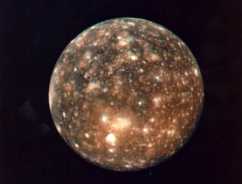
Callisto was first discovered by Galileo in 1610. It is the 2nd largest moon in the solar system, and is larger than the Earth's moon. It is about as big as the distance across the United States. Callisto
...more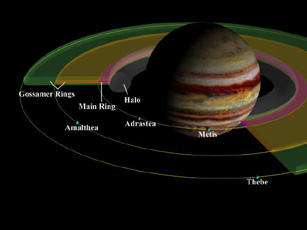
You may think Saturn is the only planet with rings. It is not! Jupiter has rings, too. They aren't as easy to see as Saturn's, but they are there! Saturns rings are made of ice and are very bright. Jupiter's
...more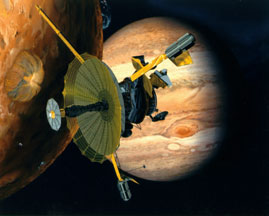
Galileo is a spacecraft that has been orbiting Jupiter for eight years. On September 21, 2003, Galileo will crash into Jupiter. It will burn up in Jupiter's atmosphere. The crash is not an accident! The
...more
Scientists found a satellite orbiting the asteroid, Eugenia. This is the second one ever! A special telescope allows scientists to look through Earth's atmosphere. The first satellite found was Dactyl.
...more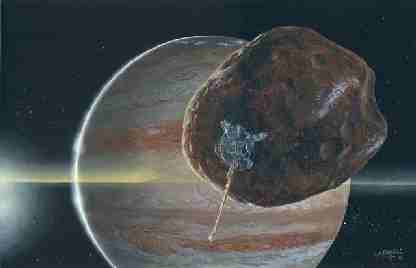
Amalthea is a small reddish moon of Jupiter. It is not made of Swiss cheese, but it does seem to be full of holes. This makes it very light! This new information came from the Galileo spacecraft last
...more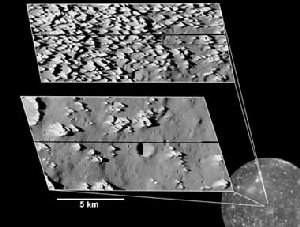
The Galileo spacecraft has been in orbit around Jupiter for almost six years now. Earlier this spring, Galileo took these pictures of Callisto. Callisto is one of Jupiter's moons. Callisto is an icy moon
...more















